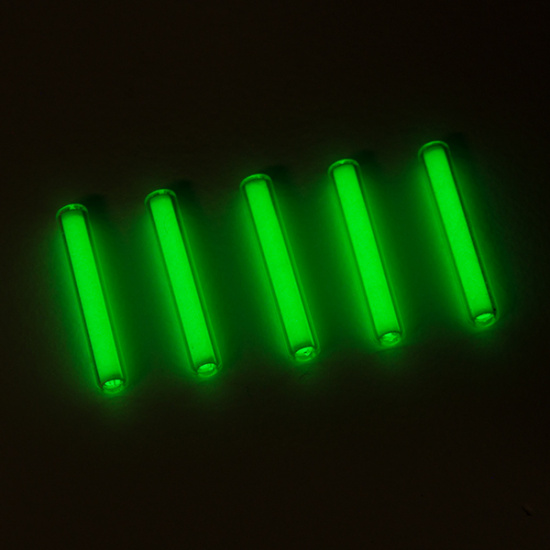Nuclear Battery Assembly Guide
A Brief Word on Tritium Gas Lights
Before you get started, you'll need to get your hands on some 2x12mm Tritium glow vials.
Remember that you will need 10x of them. These are sold under various tradenames such as:
- Mixglo
- DaxLight
- BETALight
- Gaseous Tritium Light Source (GTLS)
- Tritium Glow Tube
- Tritium Gas Tube
- Tritium Glow Vial
They're easily found on sites such as ebay, banggood, aliexpress, etc. as well as certain specialty websites. Although their sale is regulated in many countries — and you should be aware of your local laws before attempting to procure any radioisotope — we didn't have any trouble mail-ordering a small number of them in the US.
These Tritium Glow Tubes are perfectly safe to handle as the beta radiation generated from the Tritium decay cannot pass through the glass wall of the vial. Incidentally, the collision of the beta particles with the glass does produce a very tiny amount of x-rays, but not enough to harm anything. The only danger associated with Tritium gas is if it is inhaled, injected, or otherwise inserted into the body, which can only happen if you break the glass vial. If a vial does break, evacuate the room for a while to allow the gas to dissipate. Tritium occurs naturally in very small quantities and has a very short half-life compared with other glow products (such as radium) so breaking a glow vial will not turn your home into a superfund site.
If you'd like to learn more about Tritium Glow Tubes, you can check out this excellent blog post on how they're made and how they're used in watchmaking!
